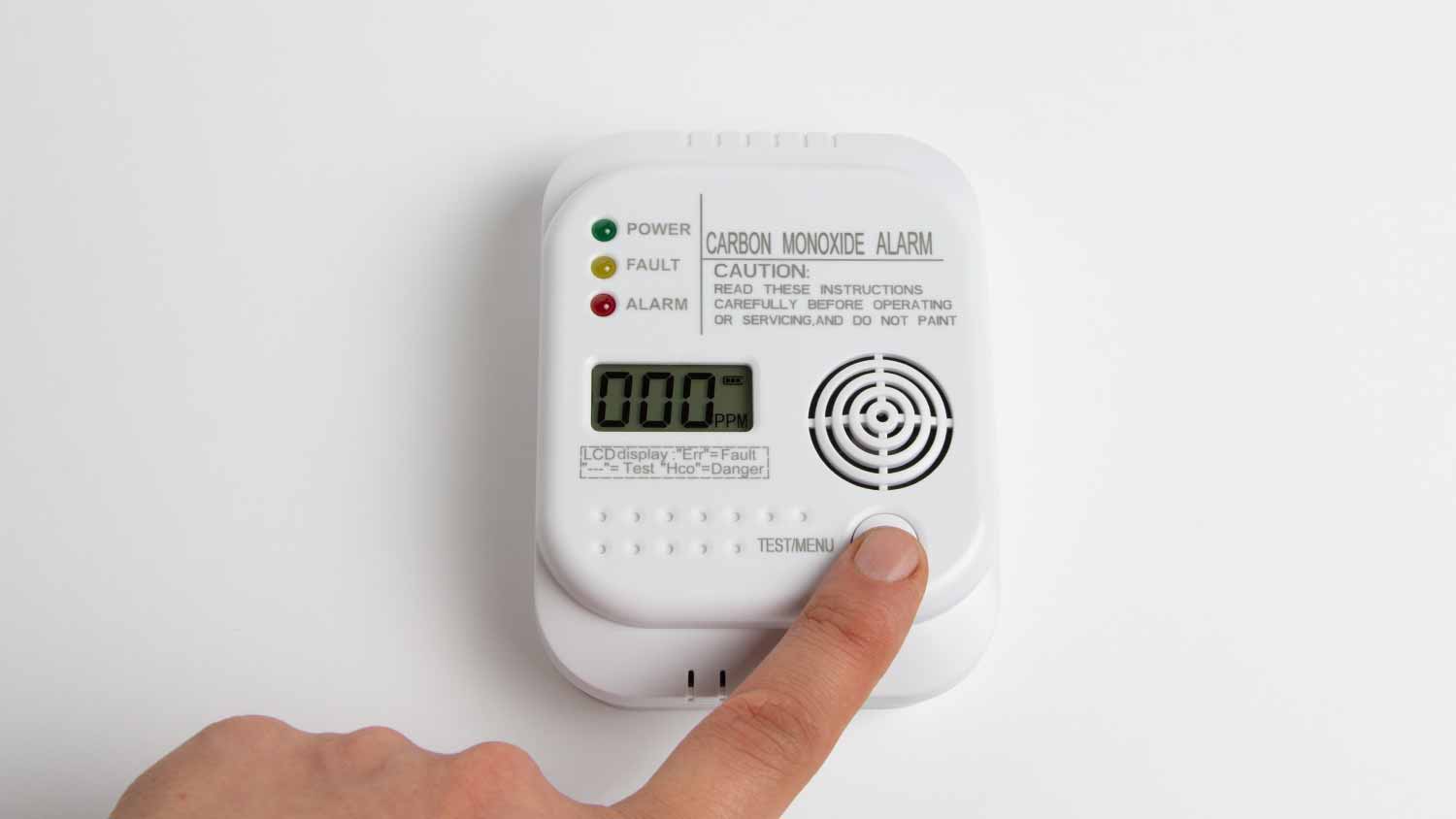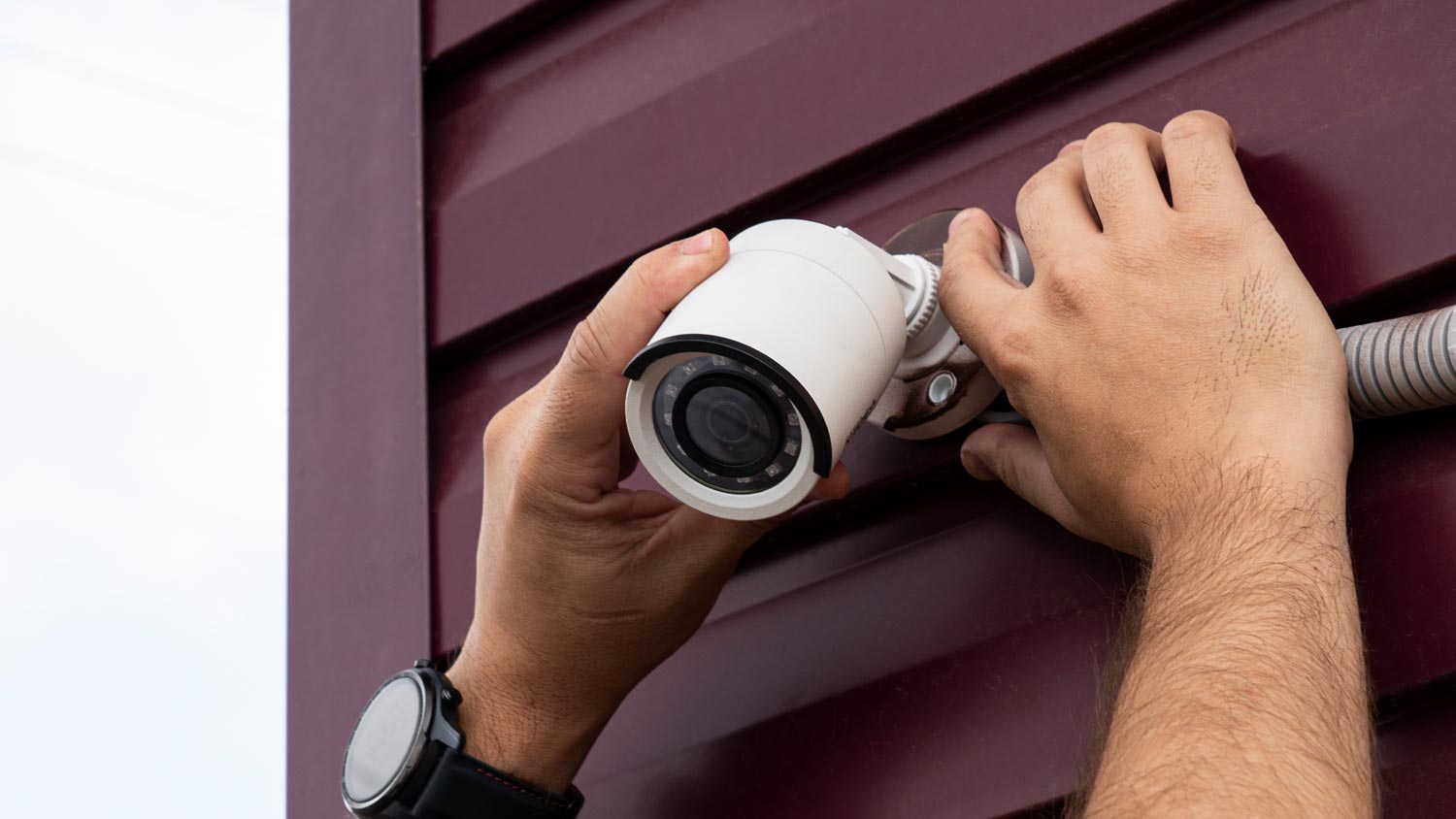5 Expert Home Fire Sprinkler System Maintenance Tips
Keep your fire sprinklers working properly—and only when you want them to


Smoke doesn’t activate sprinkler systems—heat does.
Three important maintenance tasks are checking that valves are open, inspecting sprinkler heads for damage, and checking sprinkler system water tanks.
It may be simpler and safer to contact a pro for most home fire sprinkler maintenance tasks.
Hiring a pro for a home fire sprinkler system inspection costs about $200 to $250.
Not every home has a fire sprinkler system, but most should to avoid a potentially deadly situation and cut down on extensive fire damage restoration costs. Because fire sprinklers react quickly, they can significantly reduce the heat, flames, and smoke produced during a fire. Properly installed and maintained fire sprinklers save lives and protect you from losing your home in a fire. Understanding how an in-home fire sprinkler system works can help you learn how to maintain it properly.
What Is an In-Home Fire Sprinkler System?

An in-home fire sprinkler system is a network of pipes connected to various sprinklers in the ceiling. These pipes stay filled with pressurized water so the sprinklers can immediately blast the flames with water in the event of a fire.
It’s actually not smoke that activates a sprinkler. Instead, heat will set off a fire sprinkler system. A sprinkler will activate when the air temperature reaches a certain level and may fully extinguish the fire or keep it at bay until the fire department arrives. Installing sprinklers in your home is a good way to protect yourself from a blaze burning out of control, and as a result, you need to keep them maintained.
How an In-Home Fire Sprinkler System Works
When a fire first breaks out, the sprinkler closest to the flame detects a change in heat and activates. This usually happens when the temperature rises to between 135 and 165 degrees. Then, a glass bulb filled with a special liquid (a mixture of glycerin and water) expands and shatters the glass, which triggers a valve to open in the sprinkler head.
The pressurized water rushes out, spraying in an arc to cover and wet as wide of an area as possible. Fortunately, all sprinklers don't activate at once—just the ones that the heat triggers, which will help limit water damage (and the amount you pay in water damage restoration costs) to the rest of the home.
How to Maintain a Home Sprinkler System
Most home fire sprinkler systems are low maintenance, but you will still need to do some work to ensure they're in tip-top shape. The National Fire Protection Association (NFPA) has detailed inspection, testing, and maintenance guidelines for water-based systems. Some of the activities you’ll need to do to maintain your system according to the guidelines include:
Check Valves
Perform a monthly inspection of your system’s control valve. Locate all the valves and ensure they’re open. If you have a multipurpose system, you’ll probably already know if your valve is closed—closing this valve would shut off your overall plumbing. If you have a stand-alone system, ensure the valve is marked and consider locking it so it remains open.
Inspect Sprinkler Heads
Periodically check sprinkler heads and visible pipes for signs of damage. Make sure the sprinklers are unobstructed, too. Prevent damage by never hanging anything like plants or clothing from sprinklers. Don’t block them with tall furniture or wall art—nothing should be within 18 inches of each sprinkler head. Avoid painting sprinklers and their covers, too, as this can damage their heat sensors.
Test Water Pressure and Flow
Throughout the year, you’ll need to perform various tests to keep the water pressure and flow at optimal levels. If your system has a pump, make sure it works correctly by turning it on once a month.
Test your waterflow device every six months if your system has one. To run this test, open the test connection valve and let water flow until you hear an alarm, then close the valve. Some sprinklers automatically alert emergency services when an alarm goes off. If this is the case, call the authorities ahead of time to inform them about the test.
Check the Water Tanks
If your sprinkler system is connected to a water tank or other finite source, check the water levels monthly. You can check the tank manually or install a water-level alarm. For most homes, your tank must contain enough water to provide 10 minutes of coverage. For one-story houses under 2,000 square feet, your tank must provide seven minutes of coverage.
Conduct an Internal Piping Assessment
You should run an assessment of the internal condition of your piping at least once every five years. The purpose of this test is to check for foreign material inside the pipes that could obstruct or corrode the pipes. If anything is found during the assessment, you’ll need to take steps to investigate the material, clear any existing obstructions, and prevent new ones.
Unless you’re a plumbing or fire sprinkler pro yourself, this job is better left to a professional.
Tips for Extending the Life of Your Fire Sprinkler
Additionally, the NFPA has outlined a few tips and reminders for ensuring your in-home sprinkler system works as it should for as long as possible:
Replace any sprinkler heads that have become damaged.
Keep the instructions on inspecting, testing, and maintaining the system from the installer in a safe place and refer to them often.
Visually inspect the sprinklers regularly.
Conduct an inspection when ownership changes.
If these guidelines seem confusing and complicated, it’s because they are. A knowledgeable and experienced contractor or fire sprinkler company near you can conduct a simple flow test and inspect the rest of your system to ensure everything is working properly.
Potential Problems to Watch Out For
Like any home system, issues can arise even with proper and routine maintenance. Sprinkler systems are particularly prone to wear and tear because their parts are mainly metal and water. Keep an eye out for common repair problems such as:
Scaling and corrosion in the piping system
Mineral buildup from water impurities that can clog the pipes
These problems result in pressure loss, leaks, and lower water volume—not a good combination, considering fires are controlled and extinguished with highly pressurized water.
DIY Home Fire Sprinkler System Inspection vs. Hiring a Pro
A thorough sprinkler system inspection costs about $200 to $250, and proper maintenance is vital. You may be able to handle the basics on your own, like checking for leaks, making sure the water tank is full, and running a water pressure test. However, a professional can dive deeper to check for corrosion in pipes, test sprinkler functionality, and assess risk. An annual inspection by a pro who can make sure the system is working smoothly is worth your peace of mind.
Frequently Asked Questions
You should get your home sprinkler system professionally serviced once a year. There are monthly and biannual residential fire sprinkler maintenance tasks that you can complete yourself, like checking the sprinkler heads and testing the water flow device. However, an annual inspection from a professional will help identify more complex issues and keep your system in top condition for many years. They can check for signs of blockages and corrosion, assess risk, and test your system’s overall functionality.
Installing a home sprinkler system costs an average of $4,000, with prices ranging from $1,600 to $14,000. It’s less expensive to install a system in an unfinished home ($0.80 to $2 per square foot) than it is to add one to a finished home ($2 to $7 per square foot). Sprinklers are also more expensive to install in high-rise buildings, for which you can expect to pay a minimum of $4 per square foot.





- Sprinkler Water Valve Is Leaking: Common Causes and Signs
- Sprinklers 101: The Key Parts of the Sprinkler System
- How to Fix a Sprinkler: 8 Steps to Success
- How to Build a DIY Sprinkler System and Water Your Whole Yard at Once
- Who Do I Hire to Turn on My Sprinkler System After Winter?
- Who to Call to Blow Out Sprinklers Before Winter Comes
- Who Do You Call to Turn On a Sprinkler System? Hiring Guide and DIY Tips
- How to Design the Sprinkler System of Your Dreams
- 5 Reasons Your Sprinkler Head Is Leaking
- How Much Water Does a Sprinkler Use for Lawn Irrigation? (And How Much Is It Costing You?)










